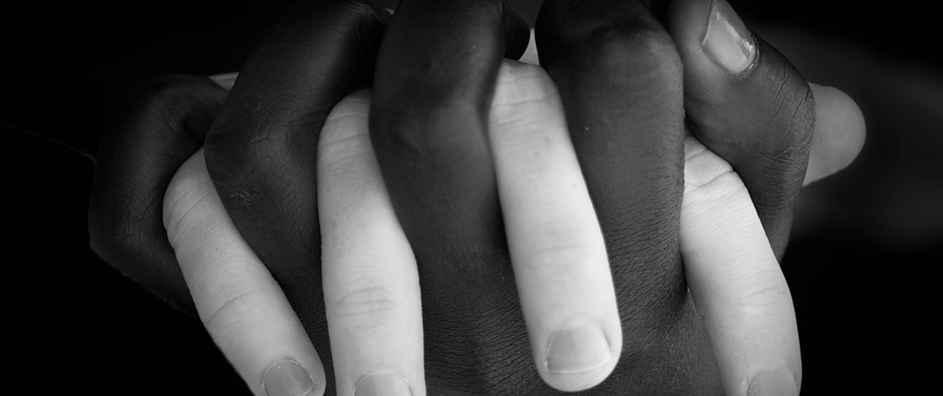The concept of races, particularly as expressed through the metaphoric imagery of being “robed in black and white,” invites profound contemplation within the framework of Baha’i teachings. This metaphor serves not only as a striking visual representation but also as a rich tapestry woven with meanings that reflect the principles of unity, diversity, and the spiritual interconnectedness of humanity. At the heart of these teachings lies a call to transcend superficial distinctions that often divide society.
To delve deeper into this intriguing imagery, one must first acknowledge the profound significance that the Baha’i Faith places on human diversity. The notion that all individuals, regardless of ethnic, racial, or cultural backgrounds, constitute the “peoples of the world,” underscores the essential unity of humanity. Baha’u’llah, the founder of the Baha’i Faith, emphasized that the diversity among races is not only a natural endowment but a divine manifestation meant to enrich the human experience. This diversity, akin to a beautiful garden where each flower contributes to the overall aesthetic, is pivotal in fostering a global society that celebrates rather than denigrates difference.
The metaphor of being “robed in black and white” additionally alludes to societal constructs that often polarize groups, invoking notions of duality—us versus them, superior versus inferior. Such dichotomies can be insidious, fostering animosity and misunderstanding. In stark contrast, the Baha’i teachings advocate for the dismantling of these artificial barriers, illuminating a path towards shared understanding. It challenges followers to envision a reality in which such divisions are dissolved in favor of an embrace of universal brotherhood and sisterhood.
This perspective is enriched by the acknowledgment that each individual possesses a unique set of attributes, talents, and experiences, contributing to the collective tapestry of society. In practical application, this implies an invitation for individuals to engage in dialogues that bridge divides, fostering a spirit of inclusivity. The Baha’i principle of the oneness of humanity posits that significantly valuable insights stem from diversity, urging individuals to seek wisdom in the perspectives of others rather than viewing diversity as an obstacle to consensus.
Moreover, the metaphor’s implications significantly extend to the spiritual dimension of life’s journey. Each “robe,” whether black or white, represents not only racial or cultural identity but a deeper spiritual state. In Baha’i thought, the essence of humanity transcends physical appearances. It is through the cultivation of virtues, such as compassion, humility, and justice, that individuals truly don the “robes” of their higher selves, engaging in the spiritual evolution that is intrinsic to the human experience. This internal dimension must lead to external manifestations, compelling an active stance in advocating for justice and equity in the face of injustice.
One might wonder why the symbol of races dressed in contrasting hues garners such fascination. A likely reason lies in its representation of the human condition—a reflection of the struggles and triumphs experienced across different cultures and histories. The coexistence of light and darkness within this imagery parallels the complexities of human existence: joy intertwined with sorrow, understanding in juxtaposition with ignorance. A nuanced embrace of both contrasts encourages a balanced perspective, revealing that even perceived divisions can be transformative when approached with love and understanding.
A further exploration of the black and white metaphor beckons one to consider the societal implications of such binary thinking. Educational institutions, workplaces, and communities often reflect entrenched biases, demonstrating the challenge of adhering to an ideal of unity while navigating systemic racism and inequity. The Baha’i code of conduct prescribes an active commitment to combat these prejudices, splitting the fabric of ignorance while weaving together threads of understanding through education and advocacy. The Baha’i teachings propose that systematic efforts to address inequalities form the foundation of a just society, one where all are free to pursue their potential without the weight of ignorance and prejudice.
Through artful reflection on the contrasts signified by the metaphor of being robed in black and white, individuals gain an awareness of the inherent divinity within all human beings. The pursuit of knowledge and the open-hearted acceptance of others’ narratives enrich one’s understanding of the world, illuminating the pathways towards peace and harmony. Learning the stories of different races and cultures allows for the unraveling of preconceived notions and fosters empathy, catalyzing a personal as well as collective transformation.
In conclusion, the Baha’i teachings invite contemplation of the profound symbolism encapsulated in the idea of races robed in black and white. It serves as a mirror reflecting the interconnectedness of humanity while challenging the dichotomous frameworks that often govern social interaction. The transformative potential of engaging with this duality calls for transcendent awareness, empathy, and action—a holistic journey towards establishing justice and promoting unity. Recognizing the divinely appointed potential within every human being ultimately leads to a more equitable and harmonious world, wherein the colors of existence are celebrated rather than polarized. The beauty and complexity of human experience, once embraced, deepen the understanding of our shared narrative as inhabitants of the same world.
